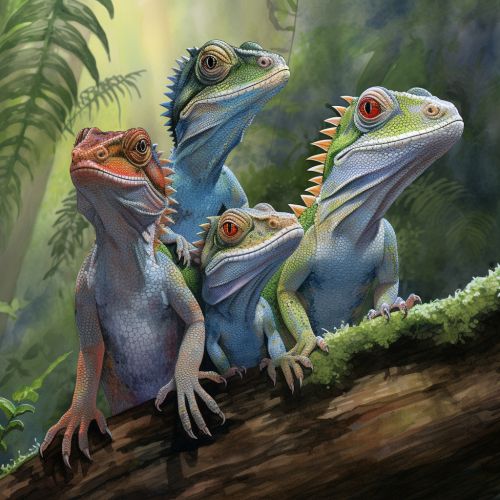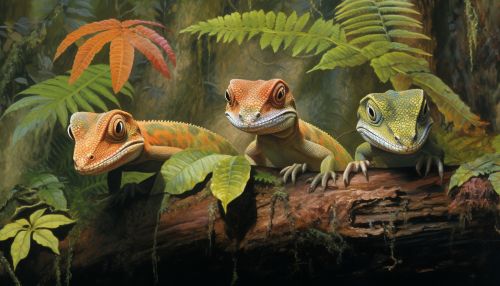Adaptive Radiation
Introduction
Adaptive radiation is a process in evolutionary biology where organisms diversify rapidly from an ancestral species into a multitude of new forms, particularly when a change in the environment makes new resources available, creates new challenges, or opens new environmental niches. This process is driven by the mutation and natural selection mechanisms of evolution, leading to the development of new species that are well-adapted to their specific environments or ecological niches.


Historical Background
The concept of adaptive radiation was first outlined by Charles Darwin in his book "On the Origin of Species" in 1859. Darwin used the term to describe the process by which organisms evolve from a common ancestor into a variety of forms adapted to different environments. He observed this phenomenon in the finches of the Galapagos Islands, where he noticed that different species of finches had different beak shapes and sizes, each adapted to a specific type of food source.
Mechanisms of Adaptive Radiation
Adaptive radiation occurs when a species enters a new environment or when the environment changes, opening up new ecological niches. This can happen through various mechanisms:
Ecological Opportunity
When a species enters a new environment with unoccupied niches, or when new niches are created due to changes in the environment, it provides an opportunity for adaptive radiation. The species can diversify and adapt to exploit these new niches, leading to the evolution of new species.
Morphological Innovation
Sometimes, a species may develop a novel morphological trait that allows it to exploit resources in a new way. This morphological innovation can trigger adaptive radiation, as the species diversifies to take advantage of new ecological opportunities.


Coevolution
Adaptive radiation can also occur through coevolution, where two or more species influence each other's evolution. For example, a predator and its prey may coevolve, with the predator evolving new strategies to catch the prey, and the prey evolving new defenses to escape the predator. This can lead to a rapid diversification of both species.
Examples of Adaptive Radiation
There are many examples of adaptive radiation in the natural world. Some of the most well-known examples include:
Darwin's Finches
The finches of the Galapagos Islands are one of the most famous examples of adaptive radiation. These birds evolved from a common ancestor into 13 different species, each adapted to a different food source and habitat on the islands.
Hawaiian Honeycreepers
The Hawaiian honeycreepers are a group of birds that have undergone adaptive radiation on the Hawaiian Islands. These birds have evolved into a variety of species with different beak shapes and sizes, each adapted to a different type of food source.
Anolis Lizards
The Anolis lizards of the Caribbean have also undergone adaptive radiation. These lizards have evolved into a variety of species, each adapted to a different habitat within the same environment.


Implications and Significance
Adaptive radiation has significant implications for understanding the process of evolution and the diversity of life on Earth. It provides insights into how species evolve and adapt to new environments, and how biodiversity is generated and maintained. It also has implications for conservation, as understanding the process of adaptive radiation can help in the preservation of biodiversity and the management of threatened species.
